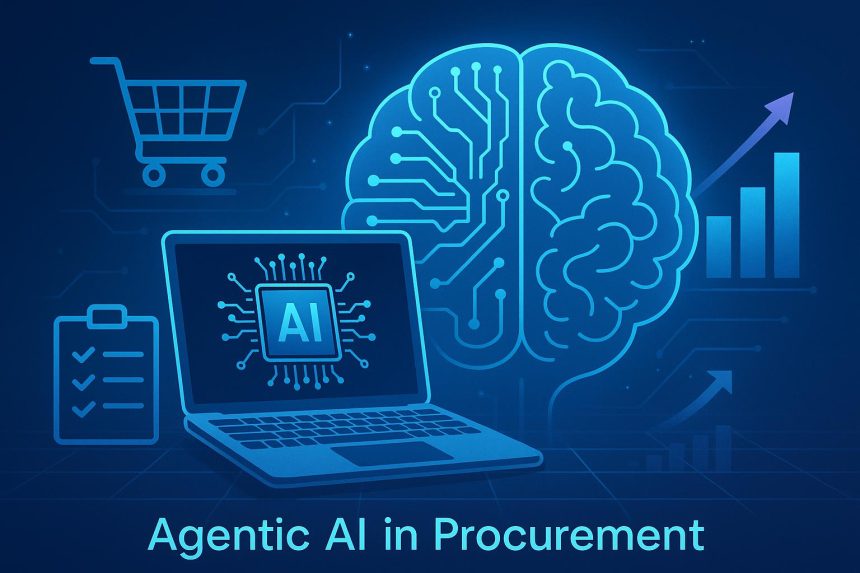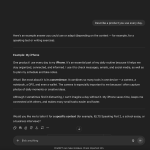As organizations face increasing global volatility, supply chain disruptions, and mounting pressure to deliver value faster, the role of procurement is evolving faster than ever. The next frontier in this transformation is Agentic AI — a new generation of artificial intelligence capable of autonomous decision-making, contextual reasoning, and real-time collaboration.
By 2026 and beyond, Agentic AI will no longer be an emerging concept but a strategic necessity, reshaping procurement from a tactical function into a predictive, intelligent, and value-generating powerhouse.
Understanding Agentic AI in Procurement
Traditional AI systems rely heavily on human inputs — they process data, provide recommendations, and require manual validation before action. Agentic AI, on the other hand, introduces autonomy. It refers to AI systems designed to perform complex tasks proactively, interact with humans and other systems, and make decisions within predefined governance frameworks.
In procurement, Agentic AI acts as a digital “co-pilot” capable of executing tasks such as supplier selection, risk monitoring, negotiation, and contract management — all while learning from outcomes and adapting to dynamic market conditions.
Unlike rule-based automation or robotic process automation (RPA), Agentic AI blends machine learning, natural language processing, and reinforcement learning to continuously evolve. It doesn’t just follow instructions; it understands business objectives and acts strategically to achieve them.
Why Procurement Needs Agentic AI
Procurement leaders face an unprecedented level of complexity. Rising costs, shifting supplier landscapes, compliance pressures, and sustainability expectations are converging to redefine procurement priorities. According to Deloitte’s 2024 CPO Survey, 65% of organizations cite “limited visibility” and “data silos” as the biggest roadblocks to strategic sourcing.
Agentic AI addresses these challenges through three critical capabilities:
- Autonomy: It performs end-to-end actions such as identifying suppliers, evaluating bids, or approving low-risk contracts with minimal human intervention.
- Adaptability: It continuously learns from new data, adjusting strategies based on market changes, supplier performance, or global disruptions.
- Collaboration: It communicates insights through natural language, integrates with enterprise systems like ERP and CRM, and collaborates with human stakeholders via platforms such as Microsoft Teams.
The result? Faster procurement cycles, fewer errors, and more strategic decision-making.
The Evolution Toward Agentic Procurement
Between now and 2026, procurement’s digital transformation will move from automation to autonomy. The shift can be broken into three distinct phases:
1. From Automation to Intelligence (2024–2025)
Procurement systems today are largely automated — they handle repetitive tasks like invoice matching or purchase order processing. However, they still depend on human oversight.
In this phase, organizations are adopting AI-driven insights for spend analysis, risk prediction, and demand forecasting. The technology supports smarter, faster decisions but not independent execution.
2. From Intelligence to Autonomy (2026–2028)
This is where Agentic AI becomes mainstream. Procurement platforms will deploy autonomous agents that execute multi-step processes, such as evaluating supplier proposals, conducting negotiations, or initiating contract renewals.
These agents will operate within “guardrails” — rules defined by corporate policy and compliance requirements — ensuring that autonomy doesn’t compromise governance.
3. From Autonomy to Orchestration (2028 and Beyond)
Beyond 2028, procurement ecosystems will evolve into self-orchestrating networks, where AI agents from buyers and suppliers collaborate dynamically. The system will automatically align sourcing strategies with market conditions, sustainability goals, and risk appetite — essentially turning procurement into an intelligent marketplace.
Explore Zycus’
What Procurement Teams Can Expect by 2026
The adoption of Agentic AI will fundamentally reshape procurement in several ways:
1. Intelligent Supplier Discovery
Agentic AI will use predictive analytics and machine learning to scan global markets, evaluate supplier capabilities, and identify ideal partners in real time. This will drastically reduce supplier onboarding times — from months to weeks — while improving diversity and resilience in the supply base.
2. Autonomous Negotiation
Negotiation agents will analyze past contracts, benchmark data, and market fluctuations to recommend — or even autonomously execute — negotiation strategies. Procurement managers will act as supervisors, focusing on strategic exceptions rather than every transaction.
3. Predictive Risk Management
Instead of reacting to disruptions, AI agents will monitor supplier health, geopolitical risks, and ESG compliance in real time. They’ll issue early warnings, simulate outcomes, and propose contingency plans — ensuring procurement remains proactive rather than reactive.
4. Contract Intelligence and Compliance
By 2026, contract lifecycle management will rely heavily on AI-driven compliance monitoring. Agentic systems will flag deviations, suggest corrective actions, and auto-renew contracts under predefined conditions, reducing compliance-related risks by up to 90%.
5. Real-Time Decision Support
Procurement leaders will have AI-powered dashboards that combine spend data, supplier insights, and risk scores into actionable recommendations. Decisions that once took weeks will be made in hours — supported by contextual data and automated validation.
The Human Element: From Operators to Strategists
The fear that AI will replace procurement professionals is misplaced. Agentic AI won’t eliminate human roles — it will redefine them.
By automating tactical work, procurement professionals can focus on strategic initiatives like supplier innovation, sustainability, and value creation. The future CPO will be more of a strategic conductor — orchestrating people, data, and AI systems to deliver outcomes that align with corporate strategy.
Soft skills such as relationship management, ethical judgment, and negotiation creativity will become even more critical. Humans will provide the strategic context that ensures AI decisions align with organizational values.
Preparing for the Agentic AI Future
To harness the potential of Agentic AI, organizations must take a structured approach to readiness and adoption. Here are key steps for procurement leaders:
- Build a Unified Data Foundation:
AI thrives on high-quality data. Ensure your procurement systems, supplier databases, and ERP platforms are integrated to eliminate silos. - Define Governance and Ethics:
Establish clear policies outlining AI decision boundaries, escalation protocols, and compliance safeguards. - Start Small, Scale Fast:
Pilot AI use cases in areas like spend analysis, supplier evaluation, or risk management before expanding to full autonomy. - Upskill Procurement Teams:
Invest in AI literacy, data analytics training, and strategic thinking to enable your workforce to collaborate effectively with intelligent systems. - Choose Scalable Platforms:
Opt for Source-to-Pay suites that offer embedded AI capabilities and modular scalability — ensuring your technology evolves with your needs.
Challenges Ahead
Despite its promise, Agentic AI adoption won’t be without challenges. Data privacy, algorithmic transparency, and change management remain top concerns. Organizations must balance automation with accountability — ensuring decisions made by AI align with business ethics and regulatory frameworks.
Interoperability will also be critical. As procurement ecosystems grow, Agentic AI systems must communicate seamlessly across departments, suppliers, and external partners to ensure consistent, real-time collaboration.
Looking Beyond 2026: The Decade of Agentic Procurement
By 2030, procurement organizations will operate in a world where human and AI collaboration is the norm. Procurement teams will design strategies, while autonomous agents execute, learn, and optimize continuously.
Success in this new era won’t come from adopting technology alone — it will depend on how effectively organizations combine AI intelligence, human insight, and ethical governance.
As Agentic AI matures, procurement will no longer be viewed as a cost center but as a strategic engine for innovation, resilience, and sustainability.
Conclusion
Agentic AI represents the next evolution of digital procurement — one that transforms how businesses source, negotiate, and manage supplier relationships. By 2026 and beyond, the organizations that thrive will be those that view AI not as a tool, but as a partner in decision-making.
Platforms such as Zycus’sMerlin Agentic AI suite exemplify this shift — enabling procurement teams to move from reactive operations to proactive, autonomous ecosystems.
The era of Agentic Procurement isn’t coming — it’s already here. The question for enterprises is no longer if they will adopt AI, but how fast they can evolve to meet the future.
Lynn Martelli is an editor at Readability. She received her MFA in Creative Writing from Antioch University and has worked as an editor for over 10 years. Lynn has edited a wide variety of books, including fiction, non-fiction, memoirs, and more. In her free time, Lynn enjoys reading, writing, and spending time with her family and friends.















